
|
|
|
|
|
|
2013
North Korea conducts its third nuclear test
On 12th February 2013, North Korean state media announced it had conducted an underground nuclear test, its third in seven years.* A tremor that showed a nuclear bomb signature with magnitude 4.9 (later revised to 5.1) was detected by the China Earthquake Networks Centre, the Comprehensive Nuclear-Test-Ban Treaty Organisation Preparatory Commission and the U.S. Geological Survey.
In response, Japan called an emergency UN meeting and South Korea raised its military alert status. The test prompted widespread condemnation and tightened economic sanctions from the international community.
Estimates of the blast yield were mostly in the 6-12 kiloton range, though one geological institute in Germany claimed it may have been as high as 40 kilotons.* For comparison, the atomic bombs dropped on Hiroshima and Nagasaki at the end of WWII had yields of 16 and 21 kilotons, respectively.
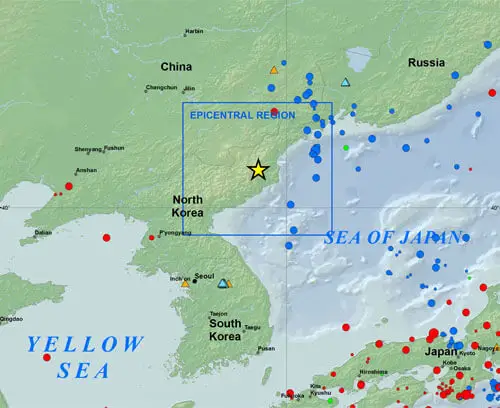
A meteor explodes over the Russian city of Chelyabinsk
On 15th February 2013, at 09:20 local time, a 19-metre asteroid entered the atmosphere over southern Russia. Estimated to have been moving at 18 km/s (40,000 mph or 64,000 km/h), or about 50 times the speed of sound, the object quickly became a superbolide – brighter than the Sun from up to 62 miles away. An intense heat from the fireball was also felt by eyewitnesses.
Due to its enormous velocity and shallow atmospheric entry angle, the object exploded in an air burst over Chelyabinsk Oblast, peaking in heat and brightness at 19 km (30 miles) altitude. The explosion produced a flash, creating many small fragmentary meteorites and a powerful shock wave. Most of the object's energy was absorbed by the atmosphere, with a total kinetic energy before impact equivalent to 550 kilotons, or 34 times more energy than the atomic bomb detonated at Hiroshima.
The object was undetected before its atmospheric entry and its explosion created panic among local residents. Although nobody was killed, nearly 1,500 were injured seriously enough to seek medical treatment. All of these injuries were due to indirect effects – rather than the meteor itself – mainly from broken glass of windows that were blown in by the shock wave, minutes after the flash. Some 7,200 buildings in six cities were damaged by the explosion's shock wave, and authorities scrambled to help repair structures in sub-zero temperatures.
With an estimated mass of 12,500 tonnes (heavier than the Eiffel Tower), and 19 metres in diameter, this was the largest known natural object to have entered the Earth's atmosphere since the 1908 Tunguska event that destroyed a remote, forested area of Siberia. The Chelyabinsk meteor was also the only meteor confirmed to have resulted in a large number of injuries.
The predicted close approach of a second asteroid, the roughly 30-metre 2012 DA14, occurred 16 hours later; analysis of both objects later confirmed they were unrelated to each other. However, its orbit was sufficiently similar to the 2 km asteroid 1999 NC43 to suggest they had once been part of the same object.
In the months after Chelyabinsk, researchers estimated that the risk of asteroids this size hitting Earth might be 10 times greater than previously thought.* International concern over the vulnerability of the planet to such impacts led the United Nations to create a defence plan, the "International Asteroid Warning Group".* Another group, the B612 Foundation, proposed a space telescope called the "Sentinel", designed to locate 90% of asteroids greater than 140 metres (460 ft) in diameter in near-Earth orbits, though the project was later cancelled due to lack of funding.*
The first creation of human embryonic stem cells by cloning
In May 2013, a study was published in the journal Nature* that described the first creation of human embryonic stem cells by cloning. Scientists at Oregon Health & Science University and Oregon National Primate Research Centre (ONPRC) successfully reprogrammed human skin cells to become embryonic stem cells, capable of transforming into any other cell type in the body. It was hoped that embryonic stem cells could one day replace a wide range of patient-specific cells and tissues damaged by injury or illness. Diseases or conditions that might be treated by such therapy included Parkinson's, multiple sclerosis, cardiac disease and spinal cord injuries.
This breakthrough followed earlier success in transforming monkey skin cells into embryonic stem cells in 2007. Previous unsuccessful attempts by several labs showed that human egg cells appeared to be more fragile than eggs from other species. Therefore, known reprogramming methods stalled before stem cells were produced. Researchers developed a variation of a commonly used method called somatic cell nuclear transfer – or SCNT – which involved transplanting the nucleus of one cell, containing an individual's DNA, into an egg cell that had its genetic material removed. The unfertilized egg cell then developed and eventually produced stem cells.
The key to this success was finding a way to prompt egg cells to remain in a state called "metaphase" during the nuclear transfer process. Metaphase is a stage in the cell’s natural division process (meiosis) when genetic material aligns in the middle of the cell before the cell divides. The research team found that chemically maintaining metaphase throughout the transfer process prevented it from stalling, which allowed the cells to develop and produce stem cells.
This breakthrough would fuel the development of stem cell therapies to combat several diseases and conditions with no current treatments. However, although cloning of stem cells was now possible (i.e. therapeutic cloning), producing entire human clones (i.e. reproductive cloning) was almost certainly not. The fragility of human cells, using this particular method, would be a major factor in preventing a cloned person.
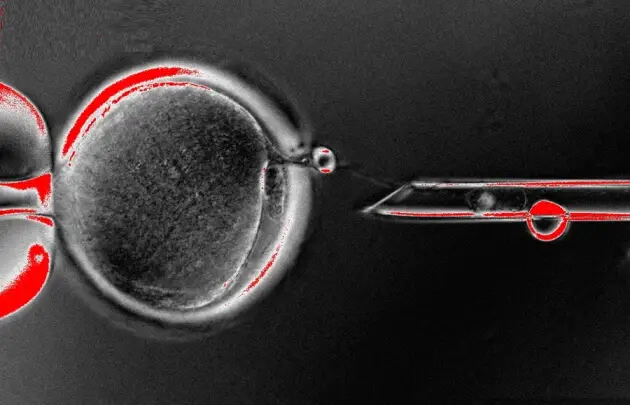
Credit: Cell, Tachibana et al.
The NSA documents are leaked
In June 2013, the media revealed operational details regarding the U.S. National Security Agency (NSA) and its international partners' mass surveillance of citizens. The vast majority of these reports emerged from a cache of top secret documents leaked by ex-NSA contractor Edward Snowden. On 6th June 2013, the first of Snowden's documents were published simultaneously by The Washington Post and The Guardian, attracting considerable public attention. The disclosure continued throughout the entire year of 2013, and a significant portion of the full cache of 1.5 million documents was later obtained and published by many other media outlets worldwide.*
These media reports shed light on the implications of several secret treaties, signed as part of an effort to implement global surveillance. For example, a data-mining programme allowed the U.S. government to access billions of emails, web histories, phone records and other personal data directly from telecom and Internet firms around the world. Widespread hacking and surveillance of international partners had also been conducted in violation of UN agreements, including the mobile phone of German leader Angela Merkel. The NSA's reach even extended into online gaming, with social networks like World of Warcraft, and virtual worlds such as Second Life being closely monitored.
These disclosures and many others gave impetus to the creation of social movements against mass surveillance, such as Restore the Fourth. Domestic spying programs in countries such as France, the United Kingdom, and India were also exposed. On the legal front, the Electronic Frontier Foundation joined a coalition of diverse groups filing suit against the NSA, while human rights organisations urged the Obama administration not to prosecute – but protect – "whistleblower Snowden".
On 14th June, U.S. prosecutors charged Snowden with espionage and theft of government property. In late July he was granted asylum by the Russian government, contributing to a deterioration of Russia–U.S. relations. President Obama made a public appearance on national television in August, where he reassured Americans that "We don't have a domestic spying program" and "There is no spying on Americans". In October 2013, the British Prime Minister David Cameron warned The Guardian not to publish any more leaks, or it would face a Defence Advisory Notice.

Birth of a royal baby
Kate Middleton is the wife of Prince William, the future King of England. In April 2011, their wedding was seen by hundreds of millions worldwide. On 3rd December 2012, St James's Palace announced that the Duchess was pregnant and expecting her first child. The royal baby and heir to the throne was born on 22nd July 2013.*

China overtakes the USA in scientific research
In terms of scientific output, China had been closing the gap between itself and the developed world for a number of years. Research papers were being published at an accelerating rate, as millions more students were entering universities and the country became more developed. At the same time, the United States had seen a marked decline in its own scientific and technological research. In 2004, China passed the UK, becoming second in terms of academic studies. The gap finally closed in 2013, as even the United States fell behind China.*

The Lunar Atmosphere and Dust Environment Explorer (LADEE) is launched by NASA
The Lunar Atmosphere and Dust Environment Explorer (LADEE) is an unmanned probe sent by NASA to study the Moon's extremely thin atmosphere, its conditions near the surface and environmental influences on lunar dust.* Equipped with a dust detector, neutral mass spectrometer and UV-visible spectrometer, it enters orbit over the lunar equator for a period of 100 days, at times flying as low as 12.5 miles (20 km). The $280 million mission has three main objectives:
• Determine the global density, composition, and time variability of the tenuous lunar exosphere before it is perturbed by further human activity.
• Determine if the Apollo astronaut sightings of diffuse emission at tens of kilometres above the surface were sodium glow or dust.
• Document the dust impactor environment (size-frequency) to help guide design engineering for an outpost and also future robotic missions.
Moon dust can be a potential health hazard – sticking to surfaces and working its way into equipment – as the crews of the Apollo missions discovered. The LADEE probe gleans valuable information that is relevant to future manned missions; not only to the lunar surface, but other destinations where dust is an issue, e.g. asteroids.*
In addition, the probe demonstrates a new laser-based communication system with vastly increased bandwidth, equivalent to transmitting over 100 HD television channels simultaneously. This short duration experiment is the precursor to a longer test, on board the Laser Communications Relay Demonstration (LCRD) intended for launch later in the decade.*
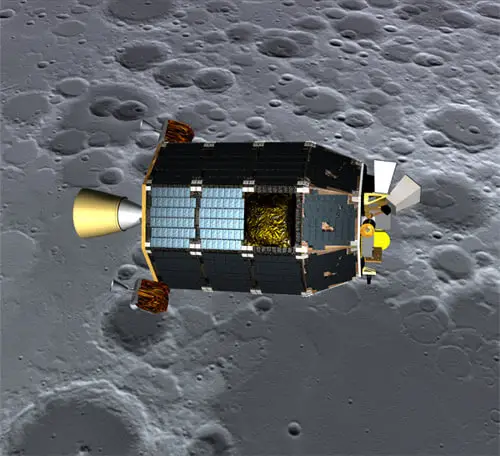
The first gene therapy in the Western world
Gene therapy is a new and emerging area of medicine that holds enormous potential. By identifying and "editing" faulty genes within a person's cells, every disease could in theory be overcome. Research into the field has been fraught with problems, however, with patients developing cancer and even dying in clinical trials.
China approved the first gene therapy in 2003. For the Western world, however, it would take another 10 years for this to happen. In 2012, Dutch company uniQure developed "Glybera", for lipoprotein lipase deficiency (LPLD) and recurring acute pancreatitis. Patients with LPLD – a very rare, inherited disease – are unable to metabolise the fat particles carried in their blood, which leads to inflammation of the pancreas (pancreatitis), an extremely serious, painful and potentially lethal condition.
Glybera was successful in human trials and received approval from the European Commission, with marketing authorisation covering all 27 EU member states. In 2013, it became commercially available.* uniQure would later gain regulatory approval in other countries including the US and Canada.
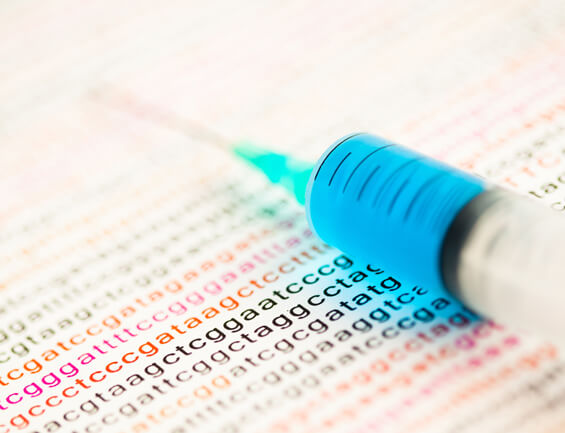
Highly flexible touch sensors are appearing in a range of gadgets
Highly flexible, film-based touch sensors entered the phone and tablet markets in 2013.* They also extended touch capabilities into a range of new consumer and industrial goods. Using roll-to-roll metal mesh technology, they could provide a high-performance alternative to existing touch sensors. Larger, lighter, sleeker, curved and edgeless designs were now possible for handheld devices. Thinner sensor stacks with flawless performance, excellent optical clarity, low sheet resistance and low power consumption enabled futuristic concepts with functional designs at lower costs compared to previous alternatives.
Launch of the PS4 and Xbox One
November 2012 saw the launch of the Wii U – the first of the eighth generation games consoles. Almost exactly a year later, in November 2013, it was joined by the PS4 and Xbox One. These new machines offered major improvements in power compared to the previous generation. Both featured eight-core CPUs and utilised AMD's new "Jaguar" technology, a processor architecture with optimal balance of power consumption and performance.
The PS4 was clocked at 1.6 GHz, while the Xbox One was slightly faster at 1.75 Ghz. However, the PS4 had a better RAM configuration, with 8 GB of GDDR5 unified system memory and a maximum bandwidth of 176 GB/s – against the 8 GB of DDR3 RAM and bandwidth of 68 GB/s for the Xbox One. Both consoles were capable of displaying at 4K resolution, had 500 GB of internal hard drive storage and were closer in design to gaming PCs than their predecessors, allowing stronger ports to desktop computer formats. Within a few weeks of release, each had achieved sales of more than two million units.
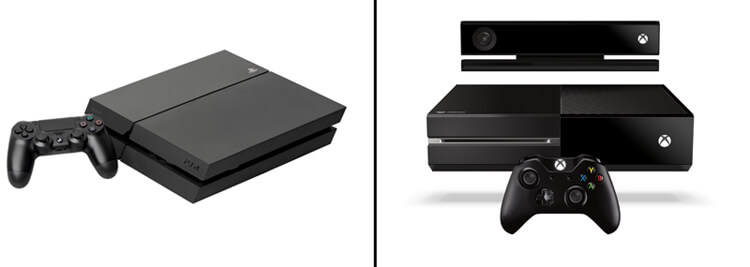
Uruguay becomes the first nation to allow full legalisation of cannabis
The use of cannabis had already been legal in Uruguay, but production and sale was not. Amid growing debate about the failed war on drugs, historic legislation was passed on 10th December 2013, aimed at further relaxing the law. While other nations had decriminalised cannabis consumption or authorised its use for medical purposes, Uruguay would become the first country to legalise the whole process – from cultivation, to sale, distribution and consumption of the drug.*
This plan included a system of user registry, a tax, and quality control, all coordinated through an existing government agency that monitored tobacco, alcohol and pharmaceuticals. In addition to reducing the influence of drug cartels, it was hoped that public health and other social issues would be addressed. The move was also intended to spur other nations to do the same. Even the United States now had a majority supporting its use, recent years having witnessed a clear shift in attitudes.*

China's first unmanned Moon landing
In addition to its space station, China also had plans to explore the Moon. Chang'e 3 was named after the Chinese Goddess of the Moon and included both a lander and rover. It was the third and most advanced in a trio of probes, two previous orbiters having launched in 2007 and 2010. Arriving on 14th December 2013, Chang'e 3 became the first craft to make a soft landing on the Moon since Russia's Luna 24 mission in 1976.*
The rover was designed to explore an area of 3 square kilometres during its three-month mission, with maximum travelling distance of 10 km (6.2 mi). It could transmit video in real time, while digging and performing analysis of soil samples. It could navigate inclines, with automatic sensors to prevent it from colliding with other objects. Among its other instruments was a radar on the underside – allowing the first direct measurements of the structure and depth of lunar soil down to 30m (98 ft), and investigation of the lunar crust structure down to several hundred metres' depth. The lander was also equipped with the first optical telescope to be deployed on another world.
The landing site, in Mare Imbrium, was determined by topographic data from the previous Chang'e 1 and 2 orbiters. China returned to the Moon in 2019 with a sample return mission, followed by manned expeditions in the 2020s and 30s.
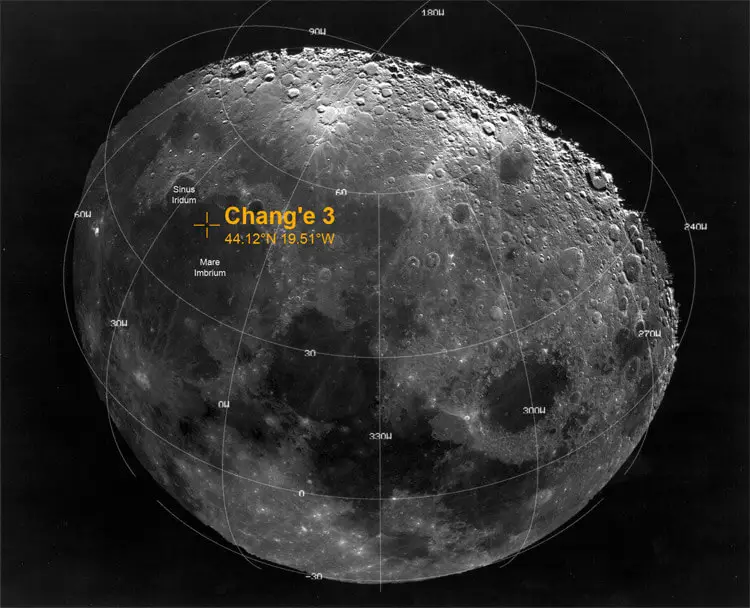
The Gaia mission is launched
While the naked eye can see only a few thousand stars on a clear night, Gaia was designed to map over a billion – approximately 1 percent of all stars within our Milky Way galaxy. Launched on 19th December, it would chart their brightnesses and spectral characteristics, as well as their positions and motions over a five year period, forming a highly detailed three-dimensional map.*
« 2012 |
⇡ Back to top ⇡ |
2014 » |
If you enjoy our content, please consider sharing it:
References
1 North Korea Nuclear Timeline - Fast Facts, CNN:
http://www.cnn.com/2013/10/29/world/asia/north-korea-nuclear-timeline---fast-facts/
Accessed 15th December 2013.
2 Estimates differ on size of N.K. blast, The Korea Herald:
http://www.koreaherald.com/view.php?ud=20130214000765
Accessed 15th December 2013.
3 What We Now Know About The Chelyabinsk Meteor, PopSci:
http://www.popsci.com/article/science/what-we-now-know-about-chelyabinsk-meteor
Accessed 15th December 2013.
4 United Nations to Spearhead Asteroid Deflection Plan, Discovery:
http://news.discovery.com/space/asteroids-meteors-meteorites/united-nations-to-spearhead-asteroid-deflection-plan-131028.htm
Accessed 15th December 2013.
5 Sentinel Space Telescope, Wikipedia:
https://en.wikipedia.org/wiki/Sentinel_Space_Telescope
Accessed 14th September 2017.
6 Human stem cells created by cloning, Nature:
http://www.nature.com/news/human-stem-cells-created-by-cloning-1.12983
Accessed 15th December 2013.
7 The NSA Files, The Guardian:
http://www.theguardian.com/world/the-nsa-files
Accessed 15th December 2013.
8 Prince George of Cambridge, Wikipedia:
https://en.wikipedia.org/wiki/Prince_George_of_Cambridge
Accessed 15th December 2013.
9 China 'to overtake US on science' in two years, BBC:
http://www.bbc.co.uk/news/science-environment-12885271
Accessed 14th July 2011.
10 NASA's LADEE Mission, NASA:
http://www.nasa.gov/mission_pages/ladee/main/index.html
Accessed 7th September 2013.
11 Nasa's LADEE Moon probe lifts off, BBC:
http://www.bbc.co.uk/news/science-environment-23939448
Accessed 7th September 2013.
12 Space Laser To Prove Increased Broadband Possible, NASA:
http://www.nasa.gov/content/space-laser-to-prove-increased-broadband-possible/
Accessed 7th September 2013.
13 The first gene therapy in the Western world, Future Timeline Blog:
https://www.futuretimeline.net/blog/2012/11/2-4.htm
Accessed 2nd January 2013.
14 "The company expects 'significant volume ramp' in 2013."
See Atmel's flexible touch sensors will revolutionize mobile device design, Extreme Tech:
http://www.extremetech.com/electronics/125325-atmels-flexible-touch-sensors-a-revolution-in-device-design
Accessed 11th April 2012.
15 Uruguay becomes first nation to legalise marijuana trade, BBC:
http://www.bbc.co.uk/news/world-latin-america-25328656
Accessed 21st December 2013.
16 A clear majority of Americans want marijuana to be legal, Future Timeline Blog:
https://www.futuretimeline.net/blog/2013/10/26-2.htm
Accessed 21st December 2013.
17 China's Jade Rabbit Moon rover sends back first photos, BBC:
http://www.bbc.co.uk/news/world-asia-25393826
Accessed 15th December 2013.
18 Gaia (spacecraft), Wikipedia:
http://en.wikipedia.org/wiki/Gaia_mission
Accessed 21st December 2013.
![[+]](https://www.futuretimeline.net/images/buttons/expand-symbol.gif)






